A process of discovery is available to us if we learn to see what we usually overlook. But what we discover depends more on our own personal filters than on what we think we are looking at.
When thinking of surprises, quite unbidden a verse from a poem by A.A. Milne – best known for creating Winnie-the-Pooh – bubbles up from my childhood. I have not worked out why this verse sticks with me – perhaps its apparent silliness is intriguing, or is it that its scansion is rather irritatingly catchy?
Jonathan Jo
Has a mouth like an “O”
And a wheelbarrow full of surprises;
If you ask for a bat,
Or for something like that,
He has got it, whatever the size is.
Judging from the illustrations by E.H. Shepard that accompanied the poem in the anthology When We Were Very Young (first published in 1924 but reprinted several times since) I have always imagined that Jonathon Jo was an eccentric gardener.
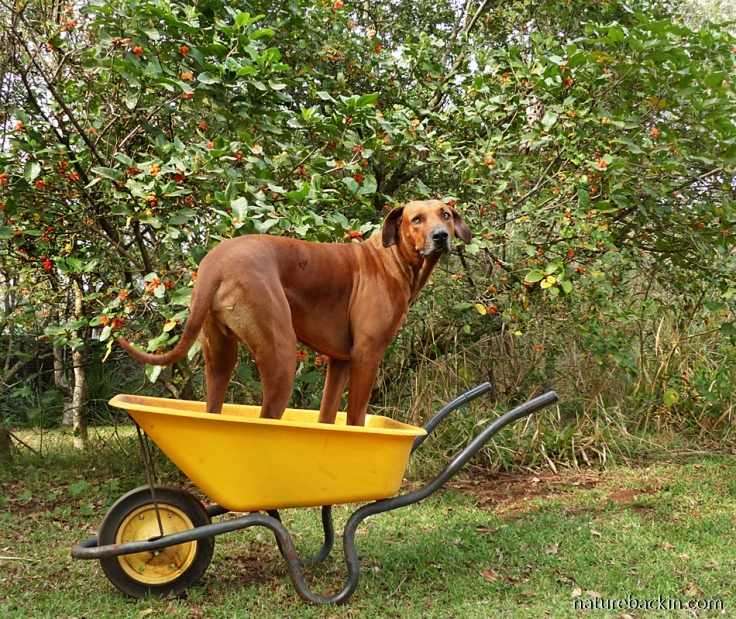
Rather than the Aberdeen Terrier that turned up in Jonathon Jo’s wheelbarrow, our wheelbarrow sometimes contains our large dog, Rory. Surprisingly for such a big dog, jumping into the wheelbarrow is one of his favourite ‘party tricks’. Given his rather withering look, I suspect that Rory might be regarding me as a somewhat eccentric gardener, hopefully though, not yet barking mad

Always surprising is the bark of the Copper-stem Corkwood (Commiphora harveyi). It peels off in thin papery pieces or strips to reveal the coppery underbark. The Afrikaans name for Commiphora species is Kanniedood, meaning cannot die, as when poles or cuttings are stuck in the ground they easily take root, so much so that some species are used to make living fences

No matter how many times I see it, I am always surprised at how perfectly carpenter bees function as pollinators, fitting into the curve of flower stamens as they seek nectar. The pollen from the stamens sticks to their slightly furry backs to pass onto subsequent flowers that they visit. Here a Giant Carpenter Bee (Xylocopa flavorufa) visits a Giant Salvia (Brilliantaisia subulugurica), a plant that is native to Zimbabwe and tropical Africa

When a potted aloe on our front deck came into flower, I was surprised to see that a Katydid remained on the flower for several weeks

As the flower developed, I got into the habit of looking out for the Katydid and admiring its long antennae. I was surprised to find one day that it was gone. I am not sure if it feeds on the flower itself or on visiting insects
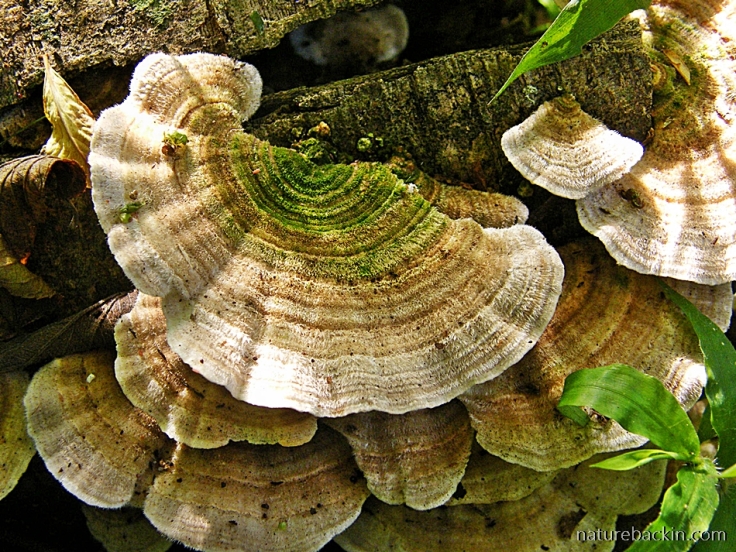
I am constantly surprised at the diversity and beauty of fungi, and in the process I have discovered the value in leaving dead wood, including dead trees (small enough not to be a danger) that are still standing, in the garden. Several species of birds collect twigs and sticks for nest building, and the dead wood hosts mini ecosystems that also provide food for birds. There is a lot to be said for emulating woodlands and not striving for sterile tidiness

I was intrigued by the small coronets of slender and tender white leaves developing atop the stems of a Sagewood (Buddleja salviifolia) shrub

It was only in when I took a close-up that I saw that a caterpillar was seemingly mimicking the shape of the leaves in a surprising form of disguise

Two honeybees busily looking for nectar on a Bird of Paradise (Strelizia reginae) plant, unexpectedly meet at close quarters as one approached from the other side of the flower. Discovering so many insects underlines the importance of not using pesticides in the garden
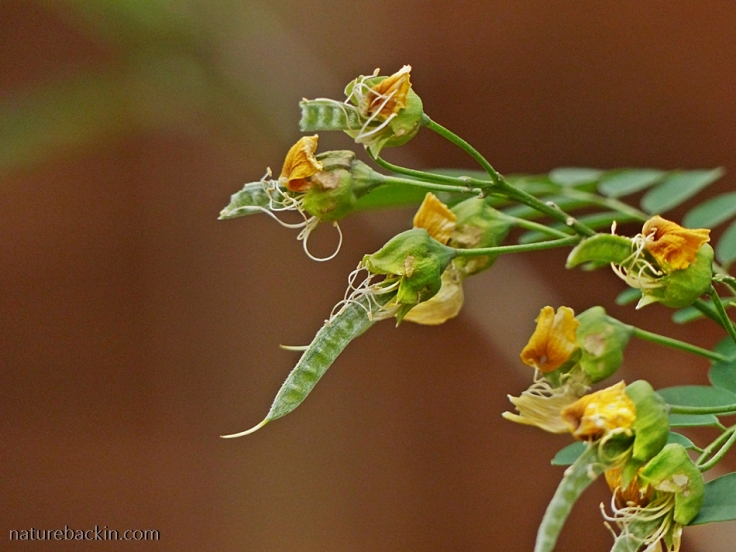
A young Wild Laburnum (one of the Calpurnias) flowered for the first time this year. I was surprised to see the seed-pods emerging even before the flower petals had dropped off. Two of the young pods have already provided food for a visitor. This young tree has grown from seedlings that had self-sown in the grasses below a mature tree that I had collected and transplanted elsewhere. It turned out that I took advantage of these gifted seedlings just in time as for some reason the mature tree died the following year. As the flowers on the larger mature tree were so high-up I had not noticed before how the pods protrude so early

A Vervet Monkey, calmly picking and eating fruit on a Crossberry tree (Grewia occidentalis) in the garden one morning. As I have mentioned in other posts, one of the pleasures of gardening for wildlife is that one is not at all bothered when wild animals eat from a diversity of plants in the garden. I do wish that more people with gardens, including those who are planting native plants, would discover the pleasures and rewards of a live and let-live approach
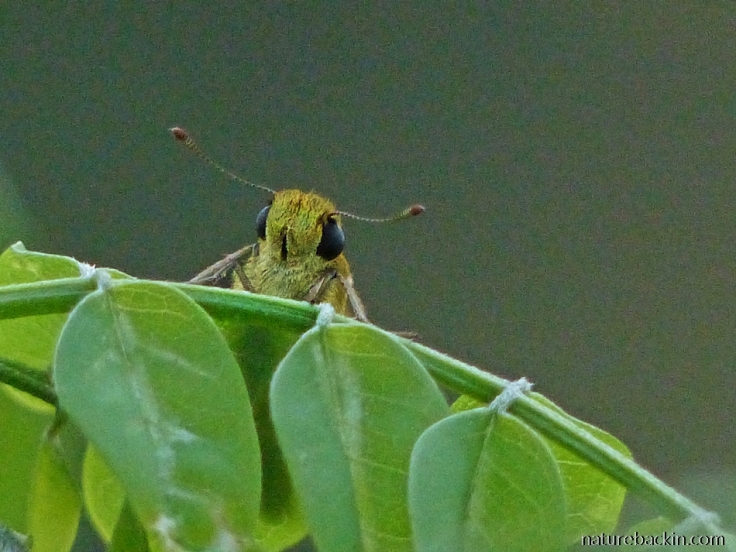
Discovering each other, and looking somewhat like a surprised alien from another planet, this small moth observes me while partially obscured by leaves on the Wild Laburnum. Like me, my spouse is learning to look more closely at the plants in the garden, and he alerted me to this charming little guy
Looking at nature in this more attentive way, one captures something of the wonder we enjoyed unselfconsciously when we were children. I am discovering that it is possible to relearn and appreciate richness even in surroundings that might at first glance seem mundane, something children, given half a chance, are able to do so effortlessly.
Anyone who has read the Winnie-the-Pooh books must remember the fictional Hundred Acre Wood where Owl had his house and Piglet too, where Eeyore had his gloomy place and Pooh hoped to find Heffalumps. Even fictional woods have the ability to enchant children and adults alike.
I was sad to read that earlier this year much of the real forest – the Five Hundred Acre Wood in Ashdown Forest in East Sussex in England – that inspired the fictional Hundred Acre Wood, was badly affected by blazing fires in February and in April. Exceptionally warm and dry conditions precipitated a drought turning the area into an easily ignitable tinderbox.
Which is a sadly appropriate reminder of the need for tomorrow’s youth-led Global Climate Strike. Young people across the world are joining a movement to remind the world of the climate emergency and are demanding climate justice for everyone and an end to the age of fossil fuels.
There are many inspirational young leaders from which we all can learn, and creative young people to inspire across age, geography and cultures. A pertinent example is the Ndlovu Youth Choir from the village of Moutse in Limpopo Province in South Africa – they have won the hearts of many as they share their message of hope, unity and love.
If you have not been following the Ndlovu Youth Choir’s recent performances at the televised America’s Got Talent show, where they went through to the final round of the competition, please do watch this video showcasing their talent prior to their participation in the talent show. It is the choir’s version of Ed Sheeran’s ‘Shape of You’ and features flautist Wouter Kellerman.
Posted by Carol






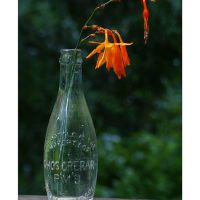
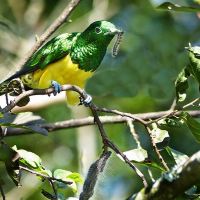
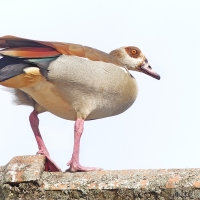
September 25, 2019 at 6:56 pm
Having been away for a few days, I am only now getting to reading blogs. Yours was the first I opened and what a welcome surprise it is. Thank you for such a varied and interesting read.
LikeLiked by 1 person
September 26, 2019 at 7:00 pm
Thanks so much Anne. Talking of surprises I so hope that you get some surprising rain soon …
LikeLike
September 25, 2019 at 7:54 am
Thanks Carol, enjoyed your text and once again, fascinating photos!
LikeLiked by 1 person
September 26, 2019 at 6:58 pm
Thanks so much Suzette.
LikeLike
September 25, 2019 at 6:26 am
I confess to being something of a cynical person, but there is always hope and it often springs from the most unlikely quarters. I totally agree with your comment about looking at nature in a more attentive way. That’s been a very positive activity for me since moving to Hawaii, especially the fascinating world of insects.
I’m particularly taken with your top photo which has quite a surreal element to it. The contours of the tree (?) have an enigmatic facial quality and the spider (?) looks like it has escaped from the eye shape above it where others are about to emerge.
LikeLiked by 2 people
September 26, 2019 at 6:57 pm
Cynicism is good armour to wear in these often bizarre times but some kinds of hope may bring a bit of light, well at least before the highly likely ensuing disappointment …
The top photo is a bit mysterious – the tree is a Fever Tree with its pale yellow powdery bark, and the spider is a Long-spinnered Bark Spider. In the eye-shaped depression there was a casing of what I thought might be small wood borer as I have seen them on other trees, and so I didn’t think it might have something to do with the spider, but on reflection maybe it did?
LikeLiked by 1 person
September 28, 2019 at 6:05 am
I try not to overdo the cynicism, but it can be helpful in seeing humor in things.
Perhaps it’s best no to analyze that photo too much so as not to strip it of its enigmatic quality.
LikeLike
September 22, 2019 at 9:53 am
Such a lovely post, Carol; I’m enjoying the choir as I write this. What jumps out from their wonderful rendition is the phrase: ‘come on now follow my lead’. And millions are following Greta. Small individual steps can add up to giant changes 🌎🤗🌎
LikeLiked by 1 person
September 22, 2019 at 6:36 pm
Thank you Sandra and I am so pleased that you enjoyed the choir. The phrase that you quote is amazingly apt, and it is inspiring that young leaders are spearheading such a movement comprising so many individuals across the world.
LikeLiked by 1 person
September 23, 2019 at 9:45 am
Carol, I also meant to mention the fire in Ashdown Forest (Pooh’s Hundred Acre Wood). It was a large and unusual fire for the area, starting at night and seemingly not deliberately. The bracken was indeed tinderbox dry. In the April fire was burning over about 50 of the forest’s 6,500 acres destroying habitat for some rare birds as well our more common bird and animal species. Much of the area is heathland – the trees in these parts no doubt vanaished long ago. A spokesman at the time said that in 6 months there would be little evidence of the fire. I drove through the forest several times over recent weeks (it’s in my old stomping ground) and I’m happy to say that the region was verdant and beautiful. Not a constructive response to climate change perhaps, but testament to nature’s recuperative powers 😊
LikeLiked by 1 person
September 22, 2019 at 8:22 am
We have to fight for all these little and big wonders! Fantastic post!
LikeLiked by 1 person
September 22, 2019 at 6:33 pm
Thank you Simone. I agree that we need to find ways of fighting for such wonders.
LikeLiked by 1 person
September 21, 2019 at 9:05 am
Rory in the yellow wheelbarrow made me chuckle, so we are quits.
LikeLiked by 1 person
September 22, 2019 at 6:30 pm
🙂 🙂
LikeLike
September 21, 2019 at 2:56 am
The video was utterly amazing and so joyful. So uplifting. Watching Greta Thunberg standing up to our jaded politicians here in the last few days has given me hope. Some of the news is quite depressing, but then there are the moments of joy and wonder to give us all some hope.
LikeLiked by 1 person
September 22, 2019 at 6:30 pm
I am pleased that you enjoyed the choir video Gunta. We all need to find hopefulness and inspiration when there is so much to be worried about. I really appreciate the articulate stand that Greta Thunberg and others have taken.
LikeLike
September 20, 2019 at 3:30 pm
I am really enjoying your post and images here Carol! Thank you for sharing! 🙂
LikeLiked by 1 person
September 20, 2019 at 7:02 pm
Thanks a lot Pete. The post developed in unexpected ways – a surprise in itself. I had not planned to write about Winnie-the-Pooh and climate change 🙂
LikeLiked by 1 person
September 20, 2019 at 2:57 pm
What a glorious post. If I may, here is my comment in the form of a poem.
Noise
by A.A. Milne
Oh, the butterflies are flying
Now the winter days are dying
And the primroses are trying
To be seen
And the turtle-doves are cooing
And the woods are up and doing
For the violets are blue-ing
In the green
Oh, the honey-bees are gumming
On their little wings, and humming
That the summer, which is coming
Will be fun
And the cows are almost cooing
And the turtle-doves are mooing
Which is why a Pooh is poohing
In the sun
For the spring is really springing;
You can see a skylark singing
And the blue-bells, which are ringing
Can be heard
And the cuckoo isn’t cooing
But he’s cucking and he’s ooing
And a Pooh is simply poohing
Like a bird
LikeLiked by 2 people
September 20, 2019 at 7:00 pm
Well that brings a smile – now that you have brought it to light I remember that poem well. It’s got some good bits and some weird bits – at least to South African ears 🙂 Thanks Mariss.
LikeLike
September 20, 2019 at 9:58 am
Excellent am so happy to see nature at its best and the pic of the such a big dog in a small barrow too. You have explained also so beautifully, Carol. Thanks so much.
LikeLiked by 1 person
September 20, 2019 at 6:57 pm
Thanks Kamal. I think our dog imagines that he is actually quite petite and sometimes he even manages to sit down in the barrow – if he remembers to arrange his tail carefully first 🙂
LikeLike
September 21, 2019 at 3:09 am
Haha so cute and they r such lovely and loveable. It is fun to see them like this. Welcome 😊😊 😊😊
LikeLiked by 1 person
September 20, 2019 at 5:46 am
What a surprising, delightful,and hopeful post. Let’s be hopeful too that today’s worldwide action will have an impact.
LikeLiked by 1 person
September 20, 2019 at 6:53 pm
Thank you Margaret, and the remarkable worldwide action today certainly is a reason for hopefulness.
LikeLiked by 1 person
September 20, 2019 at 8:14 pm
Indeed!
LikeLiked by 1 person
September 20, 2019 at 1:41 am
If we all looked at nature with such interest and love we might have taken better care of it…
Lovely post again, Carol, and your macro photography skills are uber impressive!
LikeLiked by 1 person
September 20, 2019 at 6:51 pm
Thanks so much Dries. Yes it would make sense if we better looked after the planet that is so wonderful and that we so depend on, but sadly there is a lot going on that doesn’t seem to make much sense.
LikeLiked by 1 person
September 19, 2019 at 10:31 pm
I love your closeup photos which have such clarity. Your post is a thought provoking one. I am joining the school strike today here in Mudgee and hoping it will be attended by other older people as well.
If I could get the ‘toggle’ to work, my blog would be on strike too.
LikeLiked by 1 person
September 20, 2019 at 6:47 pm
Thank you Jane. It has been good to see that there has been so much support across the globe. Great that you are participating in the strike in your town. There was no march in our town as far as I know – but today it was an incredible and exhausting 45 degrees which is exceptionally hot for our area even at the height of summer, much less now early in the season. Very scary actually.
Sorry that the blog strike toggle did not work, for your site, but more importantly perhaps is that you joined your local school strike.
LikeLike
September 19, 2019 at 9:35 pm
i am very impressed with the clarity and detail of your photos.
LikeLiked by 1 person
September 20, 2019 at 6:41 pm
Thank you so much Buddy.
LikeLike
September 20, 2019 at 9:57 pm
you are very welcome
LikeLiked by 1 person
September 19, 2019 at 9:11 pm
I know the picture looks pretty bleak sometimes 😦 But I do have some hope, so many people are taking it upon themselves to make changes. Beautiful pics.
LikeLiked by 1 person
September 20, 2019 at 6:40 pm
Thanks M.B. Yes there are some signs of hopefulness – something to hang on to!
LikeLiked by 1 person
September 19, 2019 at 8:39 pm
I’m cautiously optimistic that enough awareness is gathering momentum to make changes. Forget governments, it’s the grass roots action that will turn the tide. Great post, Carol.
LikeLiked by 2 people
September 19, 2019 at 8:47 pm
Thanks Eliza. Let us hope so – individual actions do add up.
LikeLiked by 1 person